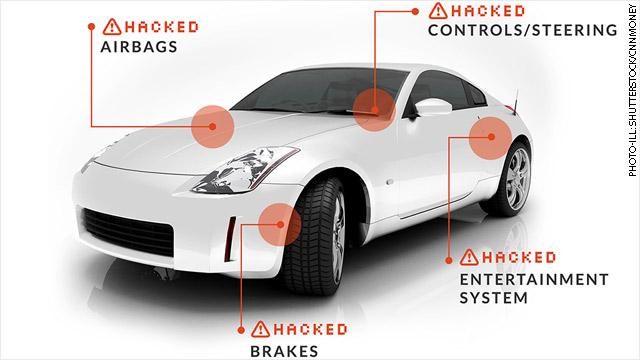Smart cars are slowly but surely taking over the industry. While there is so much to be excited about regarding innovative vehicles, such huge leaps in technology come with their set of challenges. Since smart cars are connected to networks, they may be riskier to drive than their more-traditional counterparts. Aside from crazy drivers or unexpected malfunctions on the road, owners of these smart cars will also have to consider the fact that someone might be deliberately trying to take over their car remotely. And that’s not just a hypothetical possibility.
Can hackers really take over your smart car?
While the story might sound like something from a futuristic novel, hacking a car and taking over its functions is something that has been proven to be possible. A smart car is an IoT device. While cars are much more complicated than other IoT devices like a smart thermostat or any other smart home gadget, they also have a lot in common. Smart cars, just like any other IoT device, are connected to the networks and share information with other devices. As convenient as that is, these networks are open to countless vulnerabilities.

The most well-known demonstration of what could go wrong with smart cars exploited the flaw in the 2014 Jeep Cherokee, where two industry experts could take over the car by infiltrating its network and then killing the car. While security concerns have always been a part of the discourse on smart cars, this particular incident really shook up the industry.
The ways to take over smart cars have only increased since. Hackers can now try to lock the car doors remotely, they can inject malware into various components of the car, allowing the hacker to modify the behavior of the vehicle or prevent the driver from accessing its certain features. Hackers can also exploit the vulnerabilities in the system to change certain responses to the driver’s orders. And this isn’t just theoretical. Just recently, a 19-year old security researcher managed to open car doors of over 20 Teslas remotely, which is terrifying for anyone who either owns or wants to purchase a smart car.
The risks are even higher for those who use smartphones as their remote controls for cars. There are countless ways to hack into someone’s phone, and if all your IoT devices are controlled through your phone, then the dangers could easily lead to severe real-life consequences, and it seems like there is no quick fix.
How to protect your smart car from attacks
While there’s no denying the importance of considering these risks, smart cars aren’t going anywhere. Instead of swearing all innovation and convenient smart cars, here’s what you can do to minimize the chances of your car getting hacked.
Never skip software updates
Never skip the updates. While the industry is relatively new, it’s hard to have a “silver bullet” solution to any and all risks. But one surefire way to minimize the risks is to constantly update your devices that are connected to your car and your car’s software. Updates are there to improve the device’s overall security, and you don’t want to miss out on any improvements in this case. You can try signing up for manufacturer recalls or software patches to make the process easier.
Use a VPN
Use a VPN when you are communicating to other devices using your car’s Wi-Fi. It is crucial to know the VPN meaning to understand its importance fully. Basically, VPNs encrypt your connection, making it impossible for snoopers to trace your online activity back to you. This will prevent any unwanted intervention and attempts to take control of your network and the car itself. A VPN will conceal your connection, enhancing your network’s security.
Disable service you don’t use
Be deliberate about your permissions. Don’t follow the default mode and go through all the features to reassess what you need. Disable connectivity ports you don’t use and only enable the features that you know you will use frequently. There is no reason to have all the features enabled on your car, especially if you will not use them. By being cautious and limiting the permissions, you can save yourself a lot of unnecessary trouble.








